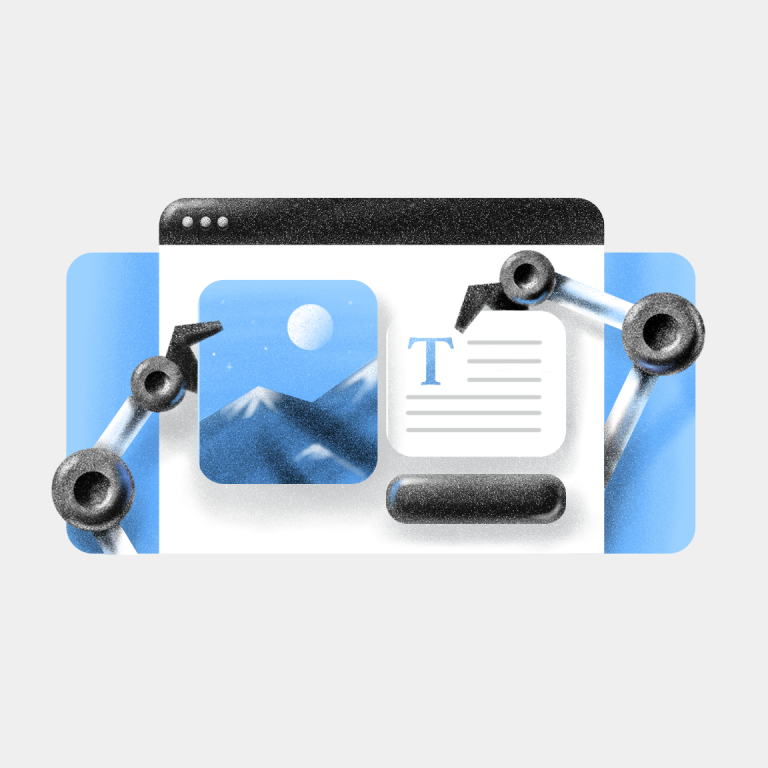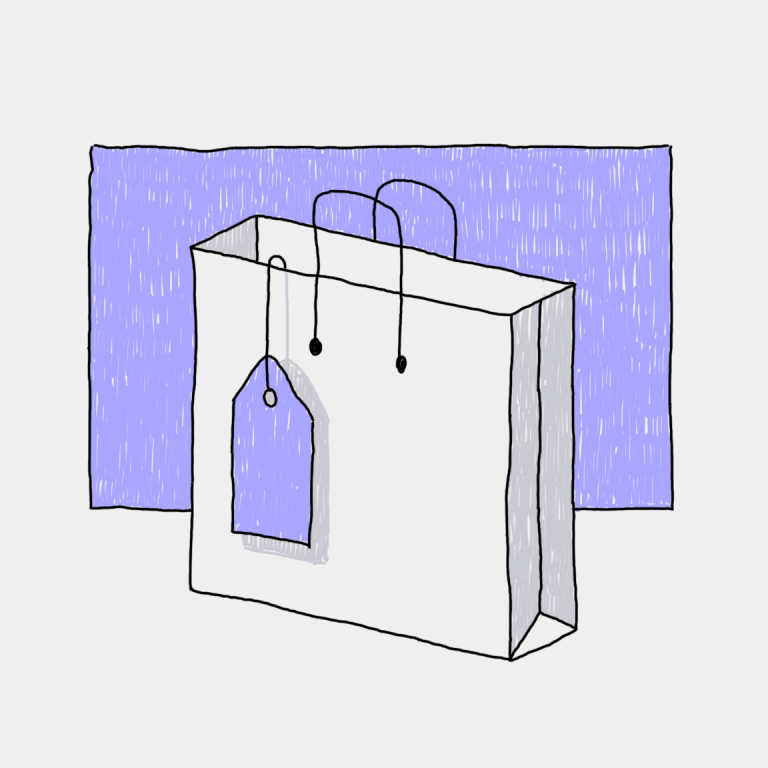The rise of podcasting is unmistakable: at this moment, there are roughly 700,000 active podcasts, while an impressive 70% of Americans are familiar with podcast content. Given the popularity of audio shows, you might be asking yourself, “Should I start a podcast?…”
To answer that question, we will share a little bit of our own podcast journey, and help you understand how podcasts can be used to promote your brand.
Why You Should Create a Podcast for Your Business
At home. On the way to work. Bathing a hedgehog. As podcasts are easy to consume in just about any situation, it’s no surprise that the number of podcasts — and people listening to them — continues to grow.

This chart by Statista shows how many Americans listen to podcasts year by year
And the popularity of podcasts makes them a great tool for brand reinforcement: 69% of respondents in a study by Statista said that podcast ads made them aware of new products or services. Podcasts also help develop a strong social media presence. And podcast listeners are not only more likely to follow a brand on social media, but they’re also more active on all social media channels.
And did we mention they’re affordable AND fun?! Well then, read on and see for yourself.
What You Need to Create a Podcast
You don’t need a fancy studio to record a podcast. Get started right in your home with these tools:
- a microphone;
- a laptop/PC;
- a pop filter (to eliminate extra noise — optional);
- headphones (to help hear yourself clearly — also optional);
audio-editing software like Audacity (free) or GarageBand (free, for Mac only);- MP3 encoding software to convert your audio to a computer file (for example, a free LAME MP3 encoder);
- a hosting service to broadcast your podcasts like Libsyn, Hipcast, SoundCloud, or Podomatic.
How to Structure Your Podcast
Before you start recording your show, you’ll need to decide what you want to tell your listeners — and how.
1. Know your audience
Who are your listeners? What do they want to learn? To answer these questions, peruse competitor blogs, learn about current trends, and check out other podcasts in your market. Or better still, if you’ve got a great blog or social media following, just ask your audience. Create a poll or start a discussion to learn what your future listeners would like to see from a potential show.
2. Choose your format and topics
Decide on the format of your show: will you do it solo, plan guest interviews, or collaborate with bloggers? Will your podcast be about industry insights, practical advice — entertainment? And how often are you planning to go on air — weekly, monthly, every two weeks?
As for the topics of your show, you can choose anything you find relevant to your market and audience. Here’s a handful of topics you might consider:
- your brand’s story or company insights;
- what inspired you to open a store and create X product;
- hacks and advice to help customers get the most out of your products;
- how to prolong the
shelf-life of your products; - reviews of trends and hot news in your market.

You can invite guests to your shows like we do here at Ecwid
Learn more:
- Sell the Story: How to Get Started with Storytelling for Your Brand
- The Ecwid
E-Commerce Show: Content Marketing and Brand Story
3. Prepare your script
If you don’t know how long your show should be, remember that the average podcast listener stays connected for 22 minutes. Here’s an outline to help you plan your episodes:
- intro monologue
(30-60 seconds) — who you are and what the podcast is about. Record it well once and you can reuse it in your future episodes. - intro music
(15-30 seconds). - the topic of the episode — why it’s important and how it’s helpful or relevant to listeners. Don’t try to give away too much information in one episode; you can always create a series to discuss the really big topics.
- closing remarks
(1.5-2 minutes) — thank the audience for listening, thank guests if there are any, talk about the next show, and ask them to subscribe. - outro music
(15-30 seconds). If you create longer episodes, you may want to take breaks with short interlude music(10-15 seconds) too to help your audience stay engaged and give their ears a short break.
And if you’ve got a new product, special offer, or other updates that may attract your potential customers, you can mention it in the beginning (or/and the end) of your episode. Here’s an example from the Ecwid
How to Use Podcasts to Promote Your Brand
Recording a podcast is just a step on the path to growing your brand awareness. So here are some tips to help you be successful.
1. Build your audience before the launch
It’s better to build your audience before you release your podcasts to make sure there’s actually someone listening on the other end. Discuss topics for podcasts on your social media channels and mention your show in your newsletter to create awareness. Build the anticipation, so that people are interested in your show before the start.
2. Offer show notes
You’ll need a show notes page where you can add all the links and resources you mention in your podcasts. Show notes will also help you rank higher on Google down the road.
3. Transcribe your podcasts
It’s important to make your content as convenient to consume as possible, so having a transcript of your episode is always a good idea. Transcripts are also good for SEO and serve as a place to collect leads if you add links to your show notes or other pages. You can make a full transcript or just excerpts of the show. Also, you don’t have to do it yourself — there are services like Rev and Trint that transcribe audio for you.
4. Repurpose your podcasts
One of the reasons podcasts are great is that you can repurpose them in as many ways as you want. For example, you can turn your podcasts into blog posts and videos. This way you create more content to share with your audience and promote your brand. And it’s great for SEO too.
More: The Ecwid
5. Promote on social media in different ways
Don’t limit yourself to just posts with links to your podcasts. Share teasers, extracts, images with quotes from episodes, videos. Make
For example, here’s one of our teasers:
Examples of Successful Branded Podcasts
A lot of businesses use podcasts to connect with customers, just like we do at Ecwid — and here are some other companies that might inspire you to do the same.
- #LIPSTORIES. Sephora partnered with Girlboss Radio to create a podcast where influential female founders, creators, and thought leaders share their stories.
- Slack Variety Pack. Slack’s podcast is a mix of stories on work culture, teamwork, and innovation in the workplace.
- Pick Me Up. Lyft partnered with Gimlet Creative to create a podcast that gives an inside look into the life of Lyft drivers. Heartwarming stories about people chasing big dreams.
- DTR. This is Tinder’s official show about dating in an
internet-obsessed world. - Keeping You Organized. The name of Smead’s show speaks for itself: it shares tips, advice, and
behind-the-scenes stories from the top organizing professionals across the US.
A good show can be an ad that people actually want to listen to. Podcasts help to improve brand awareness, which is essential for growing sales in the long term. So give it a try and stay tuned for more advice on our blog.
- What is a Marketing Strategy?
- Ecommerce Marketing Tips for Beginners
- How GS1 GTINs Can Power Your Ecommerce Business
- How to Launch A Podcast for Your Store
- 26 Google Chrome Extensions for Ecommerce
- How to Create Customer Profiles
- How to Use UTM Tags to Enhance Marketing Campaigns
- How To Do SWOT Analysis
- Landing Page Best Practices
- A/B Testing For Beginners
- Inspiring Company Mission Statements
- The Best SMS Services for Ecommerce
- Top 12 Digital Marketing Tools
- Performance Marketing Explained
- How SMBs Can Navigate the Trend of Rising Marketing Costs
- Unlocking the Secrets of Perfectly Competitive Markets








